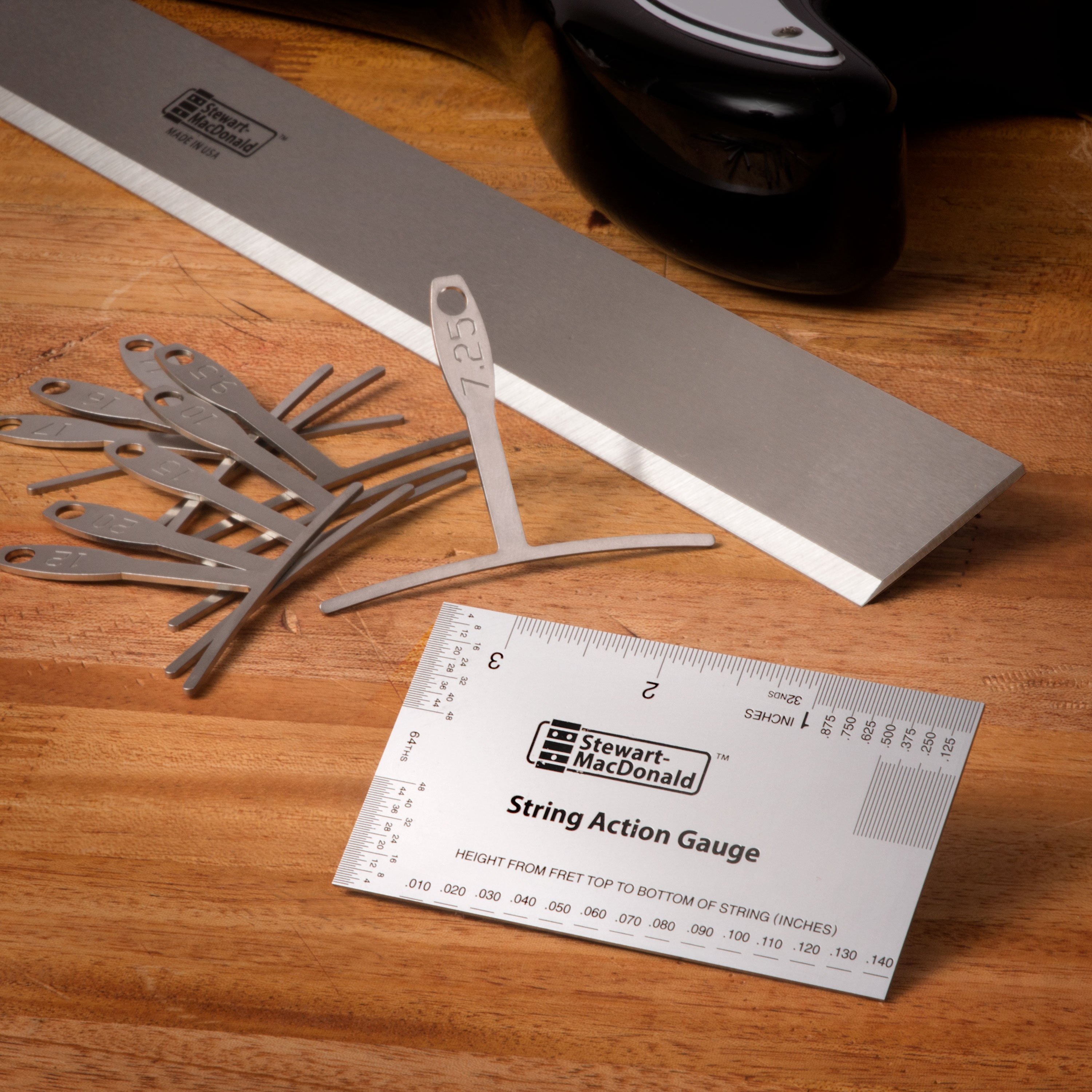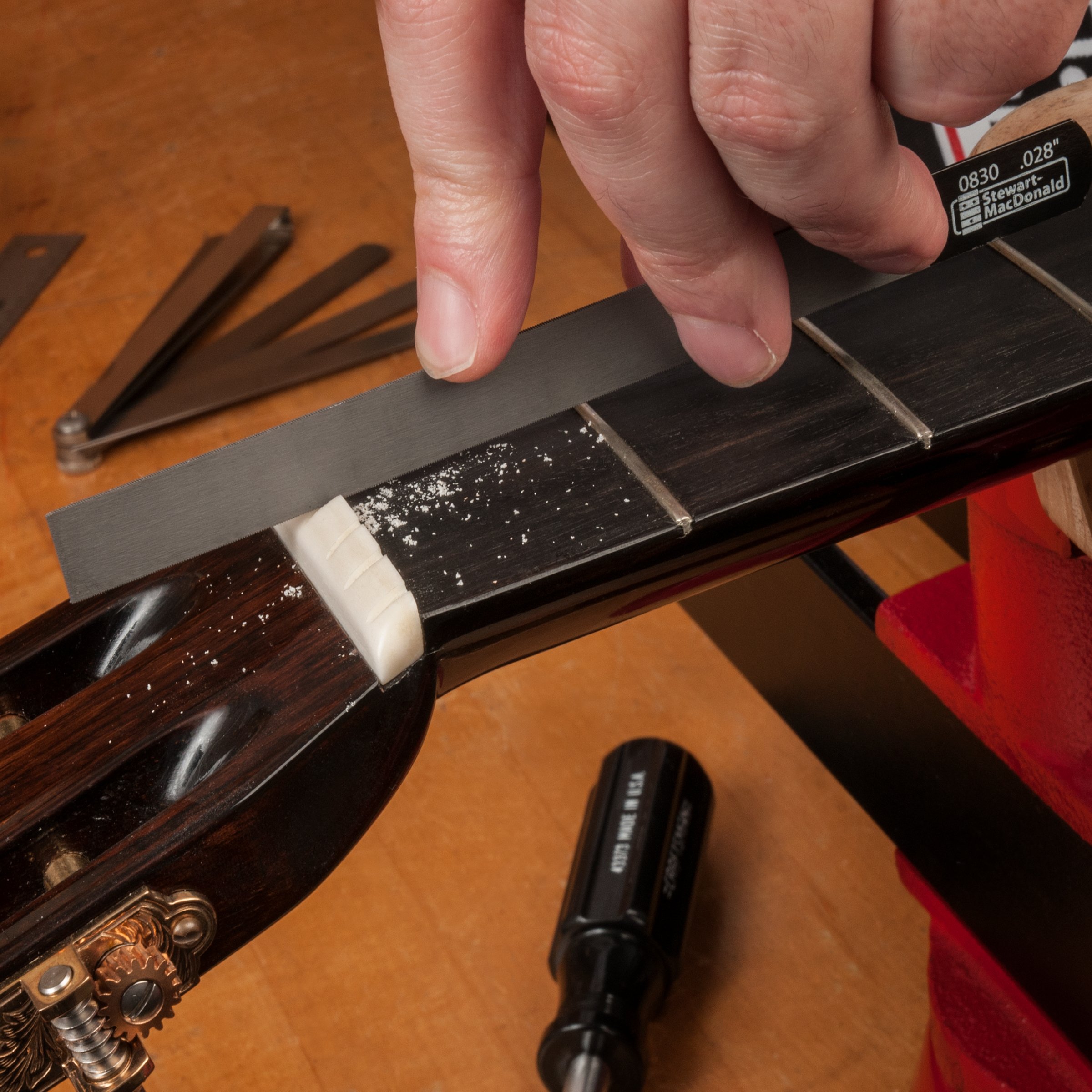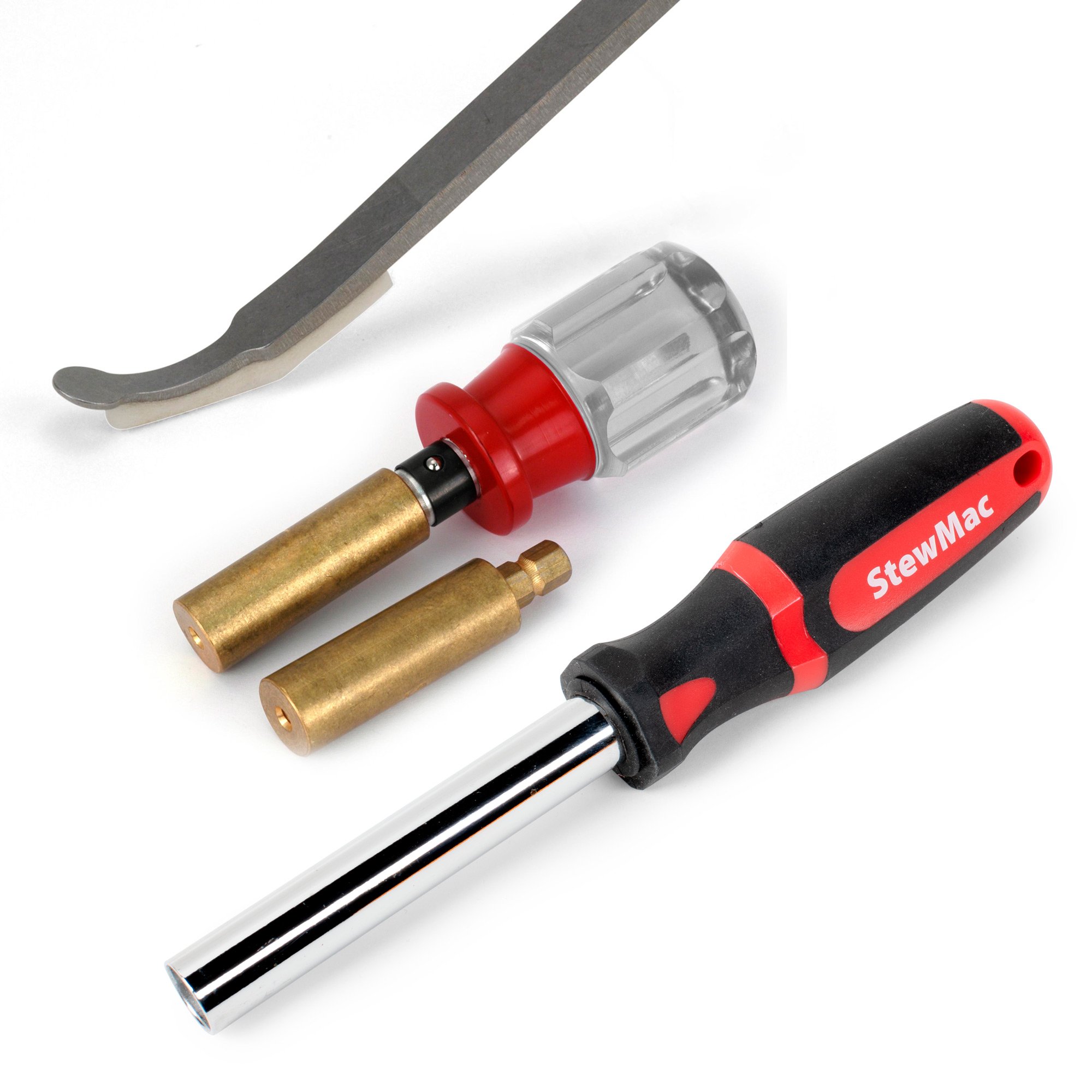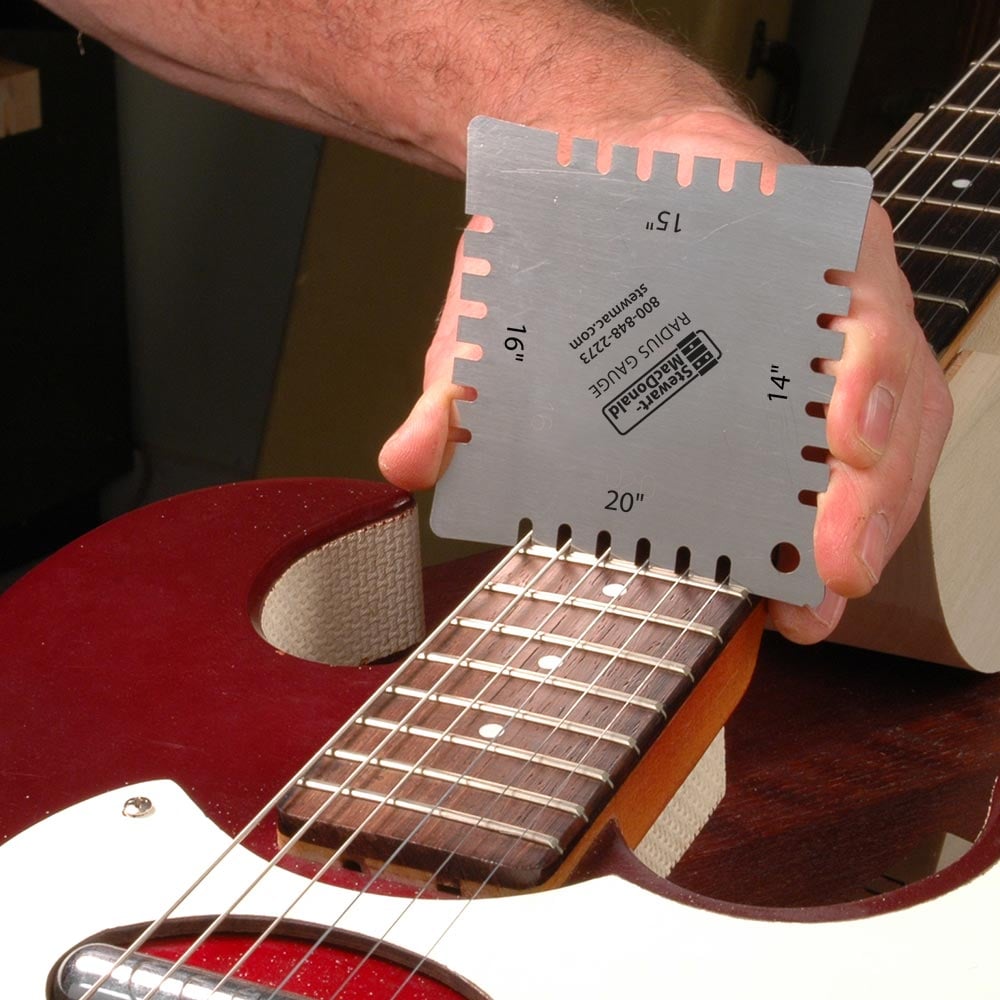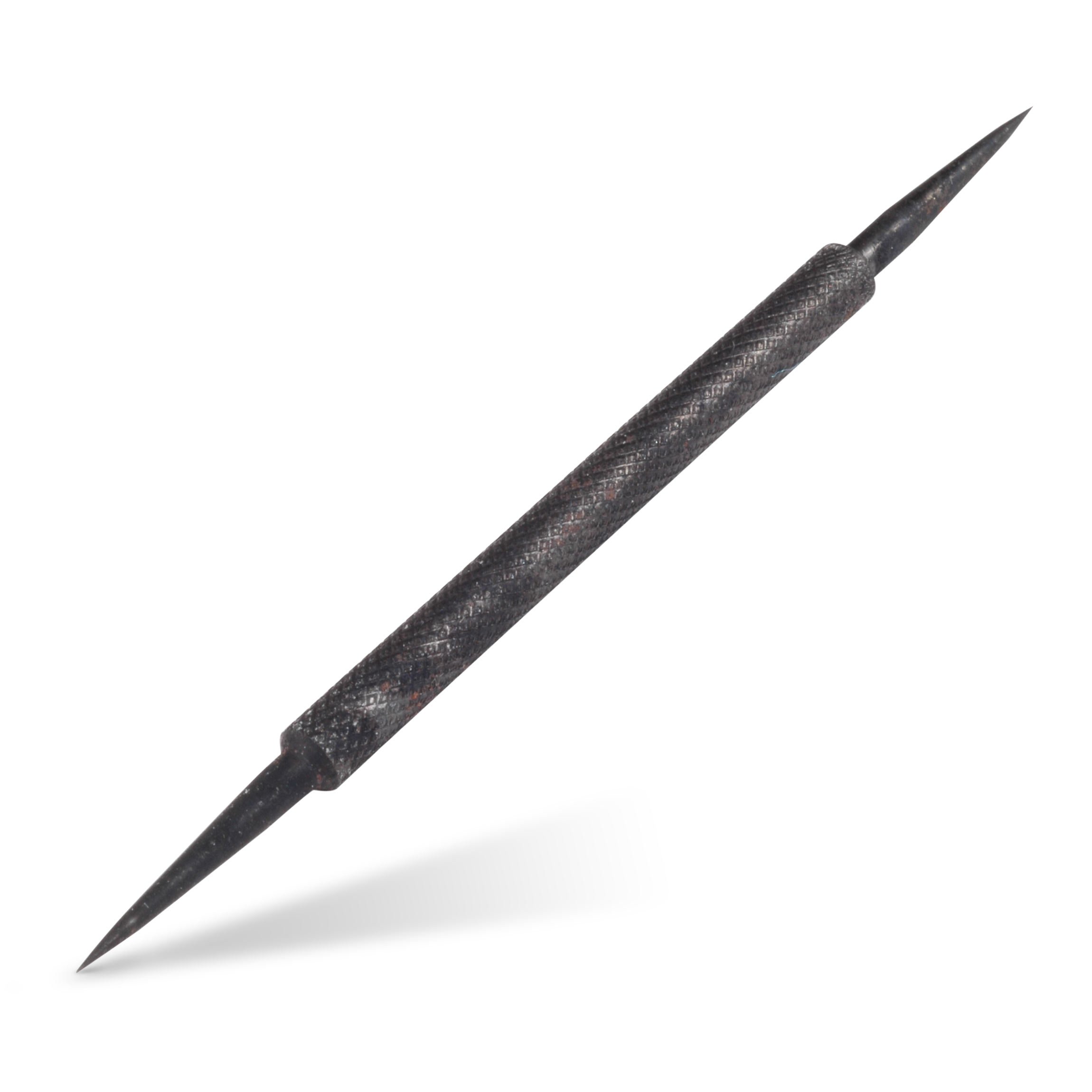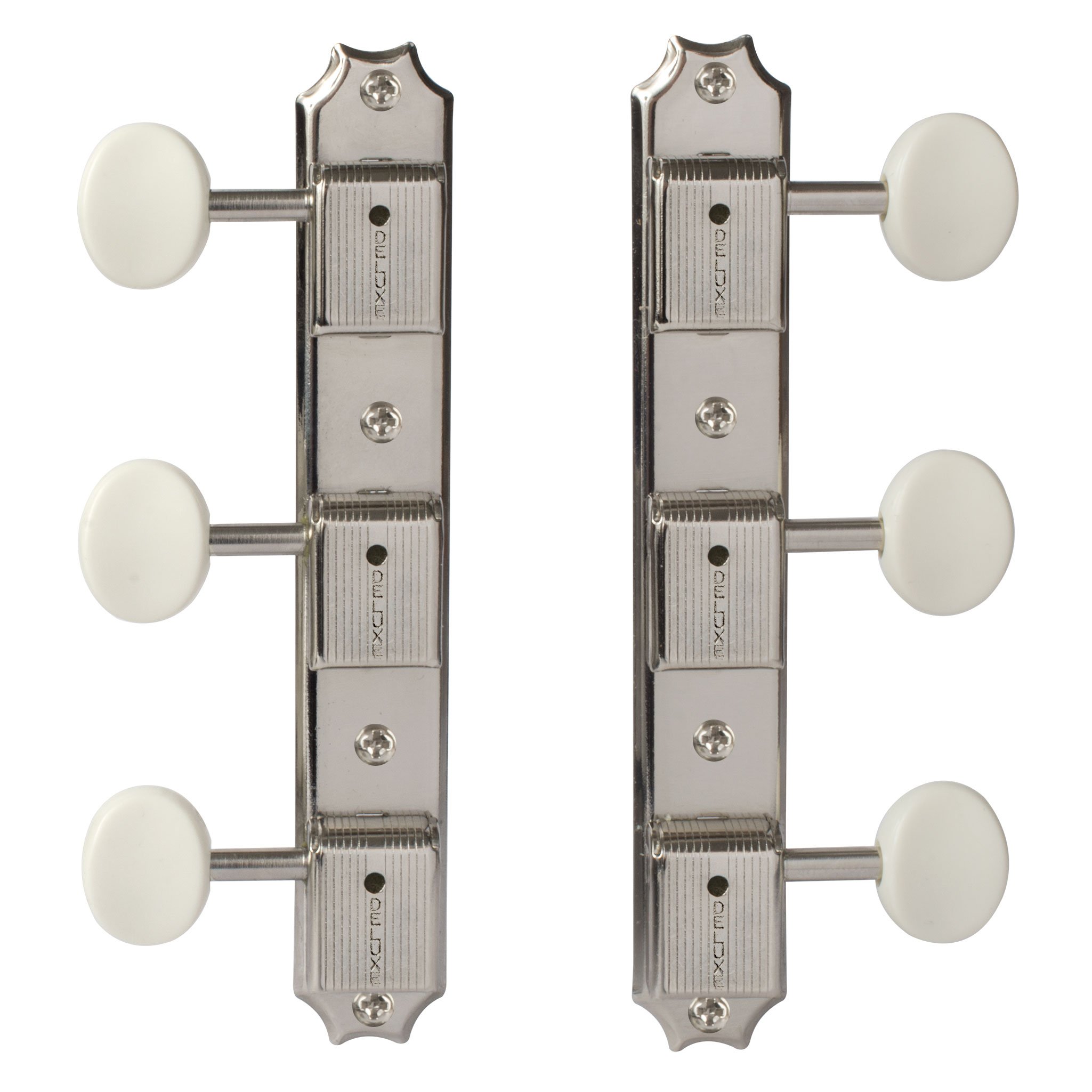Used guitars: great deals if you do some after-sale fixup
Buying used guitars: Great deals if you’re ready for a little fixup work after the sale. Frank at Blue Eagle Music always has sweet guitars to lure guitar nerds like ourselves, and we found a couple cool, affordable vintage instruments. I picked up a 1963 Gretsch Corvette, and Melissa got 1960s Hagstrom II bass. (Thanks, Blue Eagle... and thank you too, Uncle Sam!) It was made in Brooklyn, and has a single Gretsch HiLo’Tron pickup and a patent-pending Burns of London vibrato unit. The neck joint is a long mortise and tenon like the Les Pauls and SG Juniors of the same period, yet this guitar cost only a fraction of what a Gibson goes for these days. As a vintage find, the Corvette’s a bargain. A way-low price on an old guitar means something needs fixing. This guitar’s trouble: it won’t quite stay in tune. That’s okay, it’ll be fun to fix. I’ll have it ready in time for a gig coming up next weekend. The bridge support posts are mounted in a rosewood base that’s only about 1/16" of an inch thick. That’s not enough wood to hold the bridge upright, so it wobbles forward and back when I strum or use the vibrato. That’s part of the tuning trouble, right there. I cut a rosewood bridge blank down to 3/16" thick, and scribed the shape of the old bridge base onto it. After cutting this out along the scribed lines, I drilled holes to thread the bridge posts into. This bridge is really solid now. This is a non-invasive mod that retains the original appearance. I kept the old piece so I can return the guitar to its original condition if I ever sell it. (But I won’t — don’t send me an offer!) Back in the early 60s, Gretsch had trouble getting Bigsby vibrato shipments in time to keep up with production. So sometimes they used the Burns vibrato (left) as a replacement. That’s not a problem for us now, though: these days there's plenty of Bigsby action to go around They’re old Klusons, and they’ve been through the ringer. These machines have put in their 50 years of faithful service, and just don’t feel like doing it any more. Hard knocks have left two of them jammed and sticky, too. I flushed them out with naphtha, and a lot of crud came out. I lubricated them too, but it was all to no avail. These tuners are toasted. I replaced them with a new set of Gotohs that I “aged” to look original. This is issue number hundred-something of Trade Secrets, and all the tips we’ve sent so far are still available for free. Go to: stewmac.com/tradesecrets/archive For the issue where I show how I make new tuners look old, go to this link. You’ll leave the original bushings in the face of the peghead (no need to replace those), reuse the original mounting screws, and age the gear housings until your new tuners match the old parts. These new tuners are another non-invasive mod. They dropped right into the holes left by the old Klusons. Like always, I pack away the original parts for safe keeping. The guitar stays in tune now, so it’s ready for me to give it a normal setup. I found that the fretboard radius was completely flat. It didn't match the 20” radius of the bridge. I'm guessing that these guitars were always like this, right out of the factory. I thought about switching to a Tune-o-matic bridge, but naaah... I want to keep this looking original. Instead I used nut slotting files to adjust the individual string heights at the bridge. I filed each string slot until they matched the fretboard. While doing this, I also custom-fitted each slot width for my string gauges. One last step for better tuning: check that the strings aren’t binding in the nut slots, especially when using the tremolo. One slot was a little tight, so I opened it up with the nut file. Now I’m good to go. The guitar plays great and stays in tune! These simple mods didn’t take much, and they really helped this vintage guitar reach its potential. The bridge base and tuners can be put back on if I ever want to return this guitar to its original condition. The filed bridge slots are barely visible, and will likely only be apparent to a repairman who’s encountered this scenario before. On that note I say, Surf On!Me and the missus went shopping

When my wife Melissa and I got a tax refund, we went shopping at our favorite local store.

The Gretsch Corvette model 6132 is a neat little beast.

The problem:


A little history:


Now I'd better look into the tuners.
Faking age on new tuners







